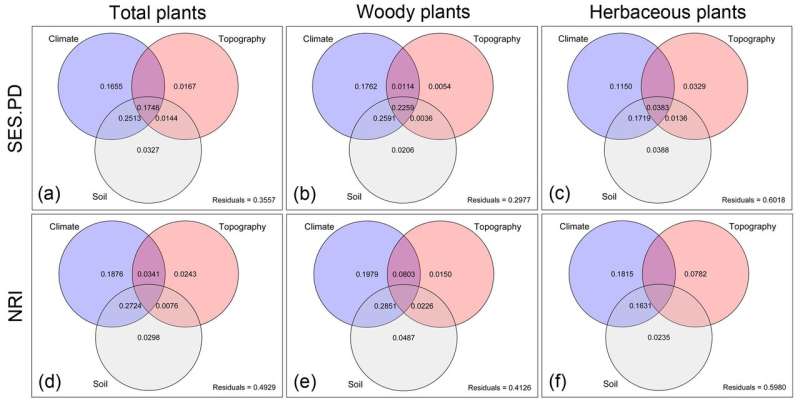Researchers investigate the spatial pattern of plant diversity in the Horn of Africa

The horn of Africa, located in the northeast of Africa, including Djibouti, Ethiopia, Eritrea and Somalia, is one of the global biodiversity hotspots recognized by United Nations Educational, Scientific and Cultural Organization (UNESCO). It has about 5000 vascular plants, half of which are endemic to the region. Ethiopia and Eritrea are major constituent countries in the horn of Africa, which is one of the most threatened terrestrial ecosystems in the world.
In August, 2019, Wang Shengwei and Biyansa H. Boru rebuilt the plant distribution information database of Ethiopia and Eritrea, based on the Flora of Ethiopia and Eritrea and some online databases, and made a fine division of flora in this area. The research results were published in the Journal of Systematics and Evolution.
Based on this reconstructed database, under the guidance of Wang Qingfeng, deputy director of Wuhan Botanical Garden and director of Sino-Africa Joint Research Center (SAJOREC), Chinese Academy of Sciences, Dr. Zhou Yadong et al. divided all the data into three sub-datasets, i.e., all species, woody plants and herbaceous plants, and then analyzed and compared the spatial pattern of six main indexes of plant diversity of the three sub-datasets in the region, including Species richness (SR), Weighted species richness (SRW), Phylogenetic diversity (PD), Phylogenetic endemism (PE), Standardized effect size phylogenetic diversity (SES_PD) and Net relatedness index (NRI).
The results showed that the richness and phylogenetic diversity of woody and herbaceous plants were basically the same, they were positively correlated with annual precipitation, annual precipitation range, topography, total nitrogen and total extractable phosphorus, and negatively correlated with annual average temperature. Compared with the total plant and herbaceous plant, all environmental variables can explain the SES_PD and NRI variation of woody plant to a greater extent.
The results show that, on a large spatial scale, environmental filtration plays a more important role in species composition of woody plants community than herbaceous plants.
The above research is supported by the Sino-Africa Joint Research Center project of the Chinese Academy of Sciences and the Youth Program of National Natural Science Foundation of China.
The research was published in the latest issue of Journal of Systems and Evolution, titled "Species richness and phylogenetic diversity of different growth forms of angiosperms across a biodiversity hotspot in the horn of Africa."
More information: Ya‐Dong Zhou et al. Species richness and phylogenetic diversity of different growth forms of angiosperms across a biodiversity hotspot in the horn of Africa, Journal of Systematics and Evolution (2019). DOI: 10.1111/jse.12559
Provided by Chinese Academy of Sciences



















